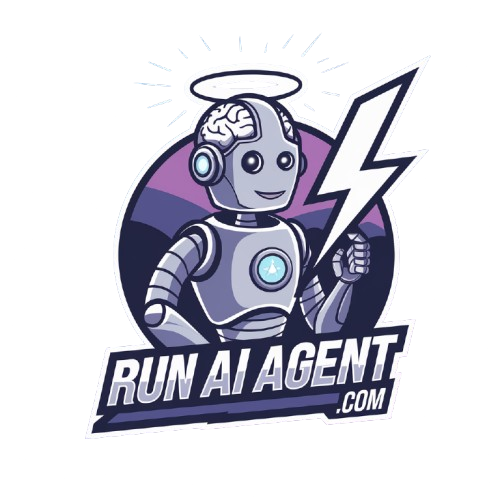Table of Contents

Key Takeaways

Strategic Planning and Business Alignment for AI Agent Deployment

Frequently Asked Questions
Key Takeaways
Deploying AI agents in the enterprise demands a strategic approach centered on clear objectives, robust scalability, seamless integration with existing systems, and strict adherence to security and compliance requirements. Effective deployments begin with comprehensive planning and business alignment, ensuring that every AI initiative directly supports organizational goals and operational needs.
- Develop a clear strategy and measurable objectives
- Design for modularity and scalability to accommodate growth
- Integrate with current systems to optimize workflows
- Prioritize security, privacy, and ongoing compliance checks
- Implement continuous monitoring and feedback loops for optimization
Enterprises that follow these best practices—combining strategic foresight, technical rigor, and iterative improvements—achieve reliable, sustainable AI agent deployments that maximize business value and minimize risk.

Strategic Planning and Business Alignment for AI Agent Deployment
Effective deployment of AI agents in the enterprise begins with clear, measurable business objectives tightly aligned to organizational strategy. Enterprises must define which business challenges the AI agents are meant to solve—such as reducing operational costs, improving customer experience, or automating workflows—and select use cases that directly support these priorities. Setting specific KPIs and success metrics from the outset ensures that AI initiatives remain focused and deliver accountable business outcomes.
- Establish business objectives and success metrics
- Identify high-value, feasible AI agent use cases
- Conduct feasibility and ROI assessments
- Map initiatives to strategic organizational goals
Before full-scale deployment, conducting a rigorous feasibility assessment—including evaluating market opportunities, resource requirements, and build-versus-buy options—grounds initiatives in practical business value. Documenting a robust business case secures leadership commitment and resource allocation. By grounding AI agent initiatives in strategy and feasibility, organizations build a strong foundation for scalable, high-value AI adoption.

Ensuring Security, Compliance, and Data Integrity in Enterprise AI
Securing AI agent deployments in the enterprise demands stringent controls at every level. Robust measures such as encrypting data both in storage and in transit, role-based access restrictions, and continuous monitoring form the foundation for protecting sensitive information and intellectual property. Regular security audits and updated incident response protocols are essential to maintain compliance with industry standards and evolving regulations, while strong privacy controls—like differential privacy and anonymization—reduce risk and ensure responsible data stewardship.
- Data encryption during storage and transmission
- Zero-trust architecture and strict authentication
- Ongoing monitoring, anomaly detection, and regular audits
- Comprehensive documentation and governance of AI workflows
Effective governance frameworks—integrated with broader IT policies—establish clear accountability and facilitate continuous risk management, ensuring enterprise AI systems are not only compliant but also resilient against threats and operational failures.
Integration, Scalability, and Continuous Optimization of AI Agents
Seamless integration of AI agents with existing enterprise systems demands robust API connectivity, secure authentication protocols, and real-time data synchronization. Adopting embedded iPaaS or unified agent orchestration frameworks enables direct interaction with core applications—such as CRMs, ERPs, and communication tools—while overcoming legacy, third-party, and networking challenges. Standardized APIs, granular access controls, and strong error handling protocols are essential to ensure data integrity and operational reliability across disparate platforms.
Scalability hinges on modular architecture, scalable data pipelines, and adaptive workflow orchestration. Enterprises should utilize frameworks that support centralized monitoring and management, enabling agents to execute complex, multi-system workflows without bottlenecks. Continuous optimization is driven by ongoing monitoring, feedback loops, and automated retraining to refine agent performance, address integration failures, and adapt to evolving business requirements.
- Integrate agents with critical business systems via standardized protocols
- Monitor agent actions and system health in real time
- Automate feedback collection and iterative improvement cycles
- Plan infrastructure for seamless horizontal and vertical scaling
Conclusion
Deploying AI agents in the enterprise effectively requires a multifaceted approach that emphasizes strategic planning, compliance, integration, and continuous improvement. At the core of this strategy is the alignment of AI initiatives with overall business objectives, ensuring that AI solutions enhance organizational operations and address complex regulatory environments.
Key best practices include:
- Comprehensive Planning: Set clear objectives for AI integration aligned with compliance goals and business strategies.
- Compliance and Governance: Ensure AI systems comply with relevant laws, regulations, and industry standards.
- Integration and Scalability: Achieve seamless integration with existing systems and plan for scalable AI deployments.
- Continuous Improvement: Implement ongoing monitoring and feedback processes to optimize AI performance.
In conclusion, a sustainable and impactful AI strategy in the enterprise hinges on the meticulous execution of these best practices, fostering an environment where AI agents deliver tangible benefits while minimizing risk and enhancing operational efficiency.
Frequently Asked Questions
Enterprises deploying AI agents often have urgent questions about integration, security, compliance, and operational efficiency. This section addresses the most critical concerns raised by decision-makers, using concise answers enriched with actionable data.
What are the top system requirements before deploying enterprise AI agents?
- Secure access to internal systems via API integrations
- Strict adherence to organizational security and compliance policies
- Compatibility with existing network infrastructure and legacy systems
- Support for high availability and disaster recovery protocols
How can organizations ensure ongoing performance and optimization of AI agents?
- Implement real-time monitoring and analytics
- Establish automated update workflows
- Conduct regular reviews of agent performance and feedback loops
What practical challenges should enterprises expect during deployment?
“Scalability, integration with legacy infrastructure, data privacy, and cost management consistently present the most significant hurdles during enterprise AI agent adoption.”
Addressing these fundamental questions enables enterprise leaders to make informed deployment decisions, reduce risk, and drive sustained value from AI investment.
